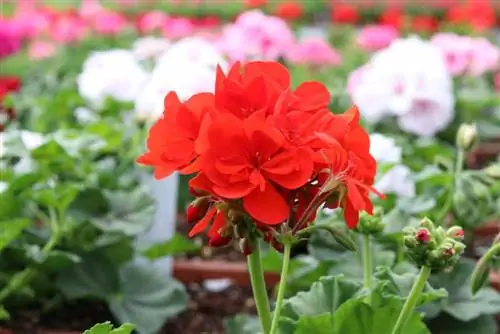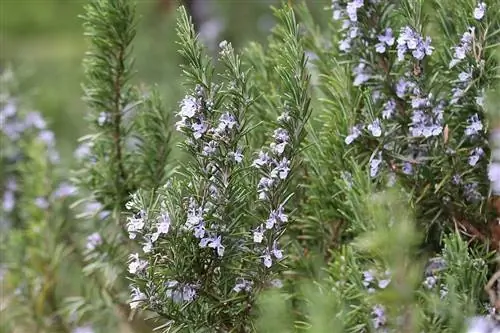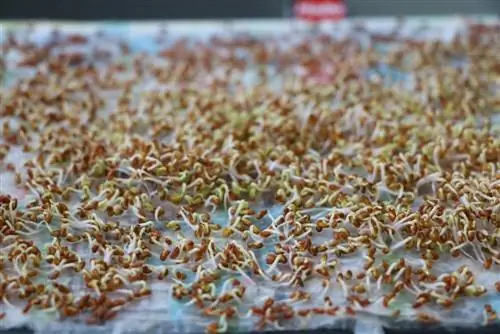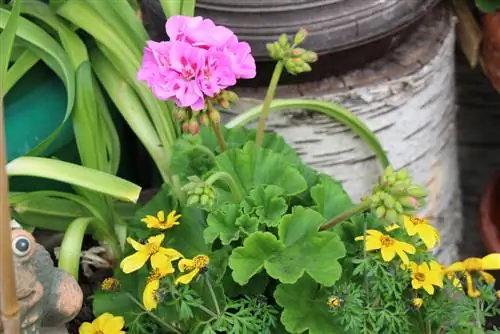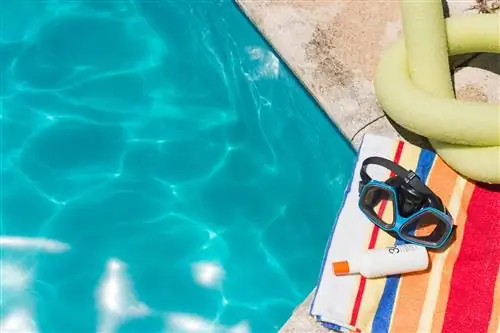- Author admin [email protected].
- Public 2023-12-17 03:39.
- Last modified 2025-01-24 12:45.
If you travel, you can't take your plants with you. To ensure that they do not die while you are away, they must continue to be adequately supplied, especially with water. But what do you do if you don't have anyone who can do the watering? Don't worry, the flowers don't have to die of thirst: a bucket of water and a few threads of wool are enough and watering works like clockwork.
Plants need constant water
Just like people, flowers need regular water to thrive. If they lack the wet element for several days, they quickly let their leaves droop. If the dry period lasts longer, they can suffer serious damage or even die completely.
- Plants must always be supplied with sufficient water
- demand is higher on warm days
- Watering breaks must not last too long
- Water requirements and watering intervals also depend on the plant variety
- In the event of your own absence, care must be ensured
What to consider when absent
If you want to see your flowers safely again after a long trip, you should not turn off the water supply completely while you are away. Unfortunately, “pre-pouring” is not ideal either. If the planters are filled to the brim with water, a nasty surprise can follow. Most plants don't like wet roots. They start to rot. Therefore, a consistent water supply must be ensured during a longer absence. The actual requirements can vary from plant to plant. The current weather can also influence water requirements. It is certainly ideal to have someone you know who is given access. If this is not possible, a suitable, “automatic” irrigation method must be sought in good time.
The necessary utensils
What is needed for irrigation with a wool thread is usually already available in every household. If not, you can get it in a store for a few euros. You need:
- a big bucket
- one thick wool thread per plant
- two nuts (for screws) per wool thread
- a box or something similar to raise the bucket
Tip:
The water container should be more generous. It is better if there is still water left at the end instead of the plants running out of water in the middle.
The optimal location for this type of irrigation

Our flowers are usually not all close together. Rather, they are usually scattered throughout the living spaces. When it comes to irrigation, you should therefore consider whether all the plants should be moved together in one location or whether a separate irrigation system should be set up for each plant on site. The second approach is certainly possible, although more labor-intensive. It makes much more sense to place the plants close together. The choice of location is also crucial:
- Light conditions should be sufficient for all plants
- sun-hungry flowers should be closer to the window
- other plants further away
- Room must not be too sunny because then the water requirement increases
- cool but bright room is optimal
Tip:
This irrigation method is also partially suitable for use on the balcony. However, if there is strong sunlight, the plants should be brought inside or watered using another method.
The size of the water container
The size of the water container is crucial for this method. Ultimately, the plants should be provided with enough water until the last day of absence. The size of the water container depends on the following factors:
- Number of plants to be supplied from it
- Water requirements of different types of flowers
- Duration of absence
- the prevailing temperature at the location (also due to weather conditions)
Cacti, for example, require less water than petunias. Likewise, the water requirement is higher on hot summer days than in winter. A jam jar is certainly enough for a single plant for a few days. For longer absences and for multiple plants, a large 5 liter bucket is necessary, perhaps even several. Since not all factors are known exactly in advance, the water requirement cannot be calculated precisely to the milliliter. In any case, the container should be generously sized to be on the safe side.
Note:
The water container should not be placed in a sunny place, otherwise too much water would evaporate from the bucket due to the heat.
The right line
Not every thread is suitable for this type of irrigation. It must meet the following requirements:
- the material must be able to absorb water easily
- it has to be thick enough
- the length has to be right
A thread made of real wool is ideal. Cotton or nylon are also suitable. If the thread is thin, it is twisted first. Several wool threads can also be braided into a thicker braid.
The right time to set up
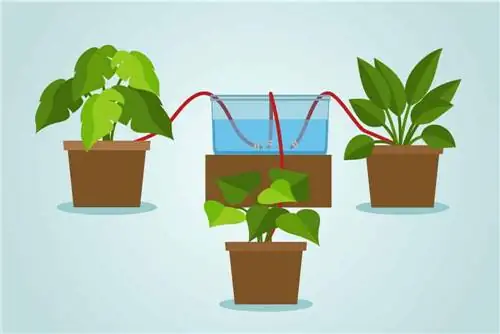
The irrigation system with the wool thread can be set up quickly and easily. Depending on the number of flowers to be cared for, it can be completed within a few minutes. It is therefore completely sufficient to start the day before the trip or immediately before. Of course, all the necessary utensils must be ready and, if necessary, purchased beforehand.
Tip:
If you still have some time before your vacation and haven't tried this watering method yet, you can try it out with a plant. If this is mastered successfully, you can travel later with a calmed feeling.
Assembly instructions step by step
So that irrigation really works smoothly, every detail of the setup has to be right. The easiest way to do this is to follow the following instructions step by step:
- Water your flowers until they are well moistened. Very dry soil would suck too much water out of the bucket right from the start. It could then be that there is not enough water available for the remaining period.
- Find a suitable location for the plants. It should be bright but not too sunny and offer enough space for all plants.
- Take all the plants to the selected place. The flowers should be close together, but should not touch each other if possible.
- Place a sufficiently large container near the flowers. It must be elevated, about 10 cm above the plant pots. If necessary, place it on a box or something similar.
- Cut threads to appropriate length. If necessary, braid these into thicker braids so that they can hold water better.
- Attach two nuts to one end of the thread to give the thread weight. This way the Fadem stays in the water and doesn't float on top.
- Put the weighted end of the thread in the bucket, it must reach the bottom.
- Put the other end of the thread approx. 8 cm deep into the potting soil, close to the roots.
- Fill the container with water. If necessary, some liquid fertilizer can also be added.
Tip:
Make sure that the threads are not too sunny. Then the threads could dry out completely before the water reaches the flower.
Learn from experience
With every method you try for the first time, you are still unsure at the beginning. Especially when it comes to how much water should be installed, you can learn well from experience. The amount left in the water container after the trip is a good indication. The condition of the plants also allows conclusions to be drawn as to whether the type and strength of the thread was a good decision. In this way, the irrigation system can be further optimized for the next upcoming absence.

